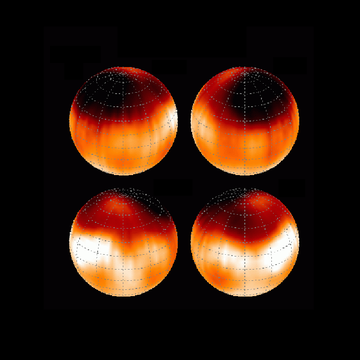Stellar Activity

Star spots on the red giant star HD 12545
Credit: AIP/K. StrassmeierOur group uses observations, theory, and computation to investigate the evolution of stars, with particular emphasis on the rotation and magnetic activity of Sun-like ones, the so-called "cool stars." These are characterized by having surface convection zones - meaning that their surfaces are boiling - and typically have masses less than 1.3 Solar masses (spectral types F, G, K, and M).
These cool stars have specific behaviors that are counterparts of those of our own Sun, specifically star spots, magnetized winds, chromospheres, dynamos, magnetic activity cycles, and others that are collectively called "Stellar Activity."
The umbrella theme of our work is the "magnetic solar-stellar connection", the idea that the Sun, which we can study in great detail because of its proximity can help us learn about the stars, while other stars which are its cousins, and which we can study under different circumstances (age, composition, environment, etc.) can help us learn about our own Sun, including its past behavior, and its possible future.
Three themes are of particular current interest:
- Measuring and understanding the rotation rates and magnetic activity of cool stars and their dependencies on all relevant variables,
- Helping to construct a Chronology of the Galaxy and of its components using rotation (gyrochronology) and other methods, and
- Mapping the surface fields of stars, together with the magnetic fields that drive them, to enable an understanding of their origins, with connections to the dynamo processes that ultimately generate them.
Our work is often carried out in collaboration with other groups at the AIP and beyond, including those specializing in Robotic Observing, High-resolution Spectroscopy, Exoplanets, Magnetohydrodynamics (MHD), Solar Physics, and the Milky Way as a whole.